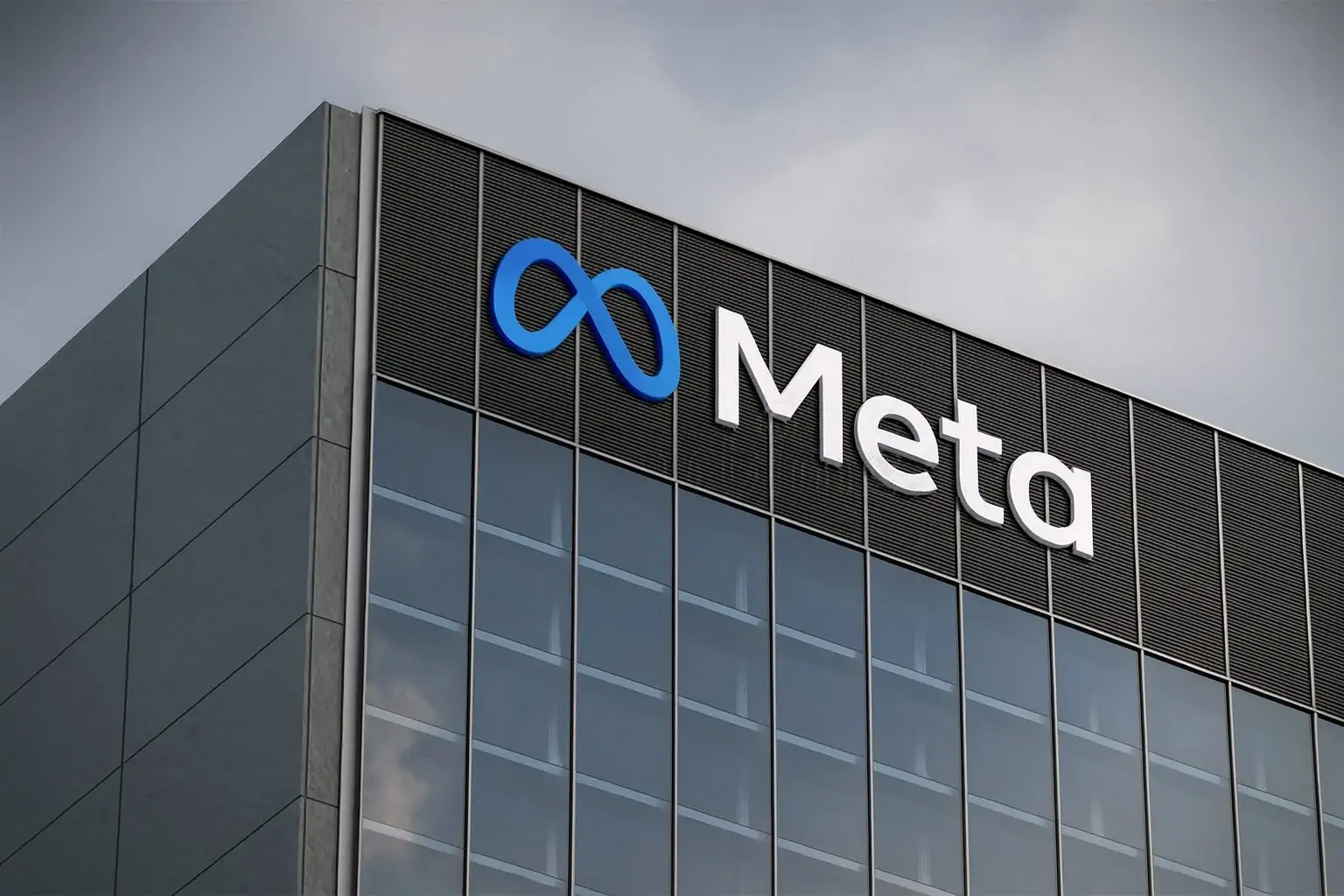As U.S. markets get ready to reopen after Thanksgiving, Meta Platforms, Inc. (NASDAQ: META) heads into a shortened Black Friday trading day with its stock well below recent highs and a stack of fresh headlines around AI spending, regulation, and ad-platform performance.
Here’s a clear, news-focused rundown of what traders and investors should know about META before the market opens on Friday, November 28, 2025.
1. Market setup: short trading day, light liquidity
Before anything about Meta specifically, remember Friday is not a normal session:
- The NYSE and Nasdaq will close early at 1:00 p.m. ET on November 28, 2025, the day after Thanksgiving. [1]
- Regular cash trading in META still opens at 9:30 a.m. ET, but with less time for price discovery and typically lighter volume than a standard Friday.
Short sessions often see:
- Thinner order books
- Sharper intraday swings when big orders hit
- Less participation from large institutions that simply “skip” the day
For anyone planning to trade META on Black Friday, position sizing and order types (limit vs. market) can matter more than usual in this kind of environment.
2. Where META stock stands going into November 28
At the close on Wednesday, November 26, 2025, Meta Platforms stock:
- Closed at $633.61, down 0.41% on the day [2]
- Has spent most of the last week trading between about $590 and $640 [3]
- Is now roughly 20% below its 52‑week high of $796.25, with a 52‑week low of $479.80 [4]
Meta is still a trillion‑dollar giant:
- Market cap: around $1.8 trillion
- Trailing P/E ratio ~31 based on recent prices and earnings [5]
The stock sold off hard after Meta’s late‑October earnings call and capex guidance, then bounced from the high‑$500s back into the low‑$600s in the days leading into Thanksgiving. [6]
For short‑term traders, the key near‑term reference levels are:
- ~$580–$590: recent downside area tested mid‑November
- ~$630–$640: where the stock is currently struggling to reclaim and hold
(Those are simply recent trading reference points, not predictions.)
3. Fresh regulatory overhangs: Spain, Brussels and Washington
Spanish court hits Meta with ~€479m data‑privacy ruling
A commercial court in Madrid has ordered Meta to pay around €479 million (about $550 million) to 87 Spanish digital publishers and news agencies, ruling that Meta’s ad‑targeting practices breached GDPR and Spanish competition law by using personal data without proper consent and gaining an unfair advantage in digital advertising. [7]
Meta has said it disagrees with the ruling and will appeal, but unless overturned, the decision reinforces the idea that European regulators are willing to directly challenge Meta’s ad‑data model — the heart of its business.
Key implications for META stock:
- Adds to the regulatory “headline risk” discount some investors already apply to the shares.
- May encourage similar actions from publishers or regulators in other EU markets.
- Could ultimately influence how Meta handles consent, tracking, and targeting in Europe — all of which touch revenue.
EU antitrust fight over “aberrant” data demands
In a separate front, Meta is at the EU Court of Justice arguing that the European Commission’s document requests in two older antitrust probes are “aberrant” and overly intrusive, claiming they swept up nearly a million internal documents, including sensitive data not relevant to the cases. [8]
The Commission says the requests are standard and largely based on search terms Meta itself proposed. A ruling is expected next year, but for markets, it’s another reminder that large, unpredictable EU fines remain on the table.
U.S. senators call for scam‑ad investigation
In the U.S., Senators Josh Hawley and Richard Blumenthal have urged the FTC and SEC to investigate Meta over allegations that the company profits heavily from scam and illicit ads on Facebook and Instagram. [9]
Their letter cites internal Meta documents reported by Reuters suggesting:
- Meta expected about 10% of its 2024 revenue (≈$16 billion) to come from “illicit” or high‑risk ads.
- The company may earn roughly $3.5 billion every six months from higher‑risk scam ads. [10]
Meta strongly disputes the characterisation, saying it “aggressively fights fraud and scams” and has cut scam reports by 58% over 18 months. [11]
Why it matters:
- The FTC and SEC have significant enforcement tools (fines, profit disgorgement, conduct orders).
- Even if no immediate action follows, the political pressure around ad quality and consumer harm adds another layer of uncertainty for META’s ad business.
4. AI infrastructure: huge capex, new data center and a potential Google chip deal
Capex guidance already spooked markets
Meta’s Q3 2025 results showed:
- Revenue $51.2 billion, up 26% year‑on‑year
- Ad revenue up a similar 26%
- Operating margin about 40%, indicating very strong underlying profitability [12]
But on the call and in its release, Meta raised 2025 capital expenditures to $70–72 billion, mostly for AI data centers and infrastructure, and signaled even higher spending in 2026. [13]
That spending surge — plus ongoing heavy losses at Reality Labs — has been a major reason META slid from its highs despite strong revenue growth.
New $1B AI data‑center campus in Wisconsin
Just two weeks ago, Meta announced plans for a new AI‑optimized data center campus in Beaver Dam, Wisconsin, its 30th data center:
- Investment: >$1 billion
- Size: around 700,000 square feet on 500+ acres
- Timeline: expected online in 2027
- Jobs: about 1,000 construction roles and 100+ permanent jobs
- Environmental commitments: powered by 100% renewable energy and backed by ~$200 million in energy‑infrastructure upgrades, plus restoration of roughly 570 acres of wetlands and prairie. [14]
This supports the bull narrative that Meta is building a powerful AI compute backbone for the next decade — but it also reinforces the bear argument that the capex bill keeps climbing.
Reported talks to spend billions on Google AI chips
Another very fresh twist: Meta is reportedly in talks with Google to spend billions of dollars on Google’s TPU (Tensor Processing Unit) AI chips for Meta’s data centers, potentially starting rentals via Google Cloud as soon as next year and deploying TPUs directly in Meta facilities from 2027. [15]
If a deal is finalised, it would:
- Diversify Meta’s AI hardware away from near‑total reliance on Nvidia.
- Potentially improve unit economics if Google’s chips prove cheaper for certain workloads.
- Underscore just how massive Meta’s planned AI spend really is: the report notes Meta could spend up to $72 billion in 2025 on AI infrastructure. [16]
For META stock, this is a double‑edged headline: it may support long‑term AI capabilities but also keeps the market focused on near‑term margin and free‑cash‑flow pressure.
5. AI and product roadmap: from Llama to “Project Luna”
Meta is also moving fast on the software and product side of AI:
- Llama models & government approval
Meta’s open‑weight Llama family has continued to evolve (Llama 4 and beyond), and in September, Llama was approved for use by U.S. government agencies, opening the door to more public‑sector deployments and signalling trust in Meta’s AI stack. [17] - Project Luna: AI‑powered morning brief
A Washington Post report says Meta is testing an internal project called “Luna”, an AI‑driven personalised morning briefing for Facebook users that summarises personal and news content, intended to compete with offerings like ChatGPT’s “Pulse.” [18] - Threads growth
Meanwhile, Meta’s Twitter‑rival Threads continues to scale. It has reached roughly 400 million monthly users and about 150 million daily active users, according to recent third‑party estimates and Meta commentary. [19]
All of this reinforces Meta’s longer‑term story as both a social‑media giant and an AI platform company, but these initiatives are not yet fully monetised, so on Black Friday the market is still likely to focus more on ad performance, margins, and regulatory risk than far‑out AI ambitions.
6. Ad platform under the microscope during peak shopping
“Glitchmas” reports: holiday ad issues and AI mistakes
For META, Black Friday and Cyber Monday (BFCM) are normally peak weeks for ad dollars. But this year, some performance marketers say the ride has been bumpy:
- AdExchanger reports that 2025 has been another “Glitchmas”, with ecommerce advertisers complaining about random delivery issues, campaign‑creation bugs, and AI‑driven creative problems in Meta’s ads manager. [20]
- Meta says its ad systems “continue to help millions of businesses grow” and that it fixed several bugs and sees no broader systemic issues. [21]
- Despite that, multiple advertisers and agency buyers say problems persisted through late last week, just as they were ramping up spend. [22]
Why it matters for Friday’s session:
- BFCM is one of the most important revenue windows of the year for Meta’s ad business.
- If glitches reduce performance or advertiser confidence, that could weigh on near‑term revenue expectations — though the effect is hard to quantify in real time.
Meta’s central role in Black Friday ad spend
Last year’s BFCM data from analytics firm Triple Whale showed that Meta captured nearly 68% of tracked paid‑social ad spend across major platforms, ahead of Google and others. [23]
Separately, a recent industry playbook expects U.S. holiday retail spending to top $1 trillion, but notes consumers are more price‑sensitive and less forgiving of “sloppy” campaigns. [24]
That combination means:
- Meta remains the main performance‑marketing battleground for ecommerce brands.
- Any persistent perception that Meta’s ad tools are glitchy, or that budgets are being mis‑allocated by AI, could feed into the bear narrative on execution risk — especially if advertisers publicly complain through the weekend.
7. Fundamentals and valuation: still a cash machine
Despite all the noise, Meta’s core financial picture is still powerful:
- Q3 2025 revenue: $51.2B (+26% YoY)
- Ad revenue: $50.1B (+26% YoY)
- Operating margin: ~40%
- Family of Apps remains overwhelmingly profitable, while Reality Labs continues to post multi‑billion‑dollar operating losses. [25]
A one‑time $15.9B tax charge related to past years significantly reduced GAAP net income, which is why headlines after earnings talked about an 80%+ drop in profit despite strong operating results. [26]
On top of that:
- Meta now pays a quarterly dividend of $0.525 per share (about $2.10 annually), after introducing its first dividend in 2024 at $0.50. [27]
- The company paid $2.66B in dividends in the first half of 2025 and continues to run multi‑billion‑dollar share buybacks, including around $4.5B in Q3 alone, according to analyst breakdowns of the filings. [28]
That combination of strong cash flow + rising shareholder returns is a key part of the bull case, even as the market debates how far AI and metaverse capex will compress free cash flow in the next couple of years.
8. Wall Street sentiment: still positive, but more cautious
Analyst sentiment on Meta is broadly bullish but cooling at the edges:
- Cantor Fitzgerald recently cut its price target from $830 to $720 while maintaining an “Overweight” rating, citing concerns around rising costs. [29]
- A GuruFocus summary of Street targets shows an average 12‑month price target around $840, with a range roughly from $560 to $1,117. That implies substantial upside from current prices if those forecasts prove accurate, but also highlights wide disagreement on fair value. [30]
Opinion pieces from platforms such as Nasdaq and The Motley Fool now frequently describe Meta as:
- The “cheapest of the mega‑cap AI stocks” on some valuation metrics.
- A growth stock that has been “slammed” by spending worries and is now trading at a discount despite robust ad growth. [31]
One discounted‑cash‑flow analysis highlighted by Yahoo Finance even suggests Meta may be over 40% undervalued relative to intrinsic value, although models like that depend heavily on long‑term assumptions about AI returns and capex tapering. [32]
For Black Friday, the bottom line is: the Street remains mostly constructive, but investors are no longer giving Meta a free pass on massive AI and metaverse spending.
9. Ownership and insider activity
Recent disclosures show a mix of institutional rebalancing and modest insider selling:
- MarketBeat reports that Kingsview Wealth Management cut its META position by about 63% in Q2, though other wealth managers and advisors modestly increased their stakes. Overall, around 80% of Meta’s float is still held by institutions and hedge funds. [33]
- On the insider side, Meta COO Javier Olivan recently sold 517 shares (≈$309,000) on November 24, 2025 at an average price of about $598.54, under a pre‑arranged 10b5‑1 plan. [34]
- Additional filings show small sales by board member Robert Kimmitt and other executives in recent months, part of normal diversification and compensation‑related sales rather than a wholesale exit. [35]
None of these sales look huge relative to total insider holdings, but traders often keep an eye on any acceleration of insider selling when a stock is already under pressure.
10. Key things to watch for META on November 28, 2025
Here’s a quick checklist for the Black Friday session:
- Pre‑market reaction to this week’s news
- Regulatory headlines (Spain fine, EU data‑request fight, U.S. scam‑ad probe) could continue to weigh on sentiment, especially if any new political statements drop. [36]
- How META trades relative to other “hyperscalers”
- Amazon, Alphabet, Microsoft, Nvidia and Meta have all seen big swings as investors reassess AI infrastructure spending. A recent “Flight of the Hyperscalers” analysis highlighted that the group is expected to spend $441 billion on infrastructure in 2025, up 184% from 2023 — a pace some fear looks bubble‑like. [37]
- If the group rallies, META might move with it; if investors continue punishing high‑capex names, Meta could lag.
- Any follow‑up detail on the Google TPU talks
- Confirmation, denial, or extra color from Meta or Alphabet on the chip‑supply partnership could move both names and shift the narrative around Meta’s AI cost structure. [38]
- Ad‑tech chatter through the BFCM weekend
- Watch for public complaints or praise from large ecommerce brands and agencies about Meta’s ad performance over Black Friday and Cyber Monday. If “Glitchmas” stories dominate, it may influence how analysts frame Q4 commentary. [39]
- Price action around the $600–$640 zone
- Holding above the recent $590ish floor will help support the view that the post‑earnings flush has stabilised; a decisive break lower could revive fears that the market is re‑pricing Meta’s AI spending more severely. [40]
Final note
This overview is informational and news‑oriented, not investment advice. How you trade or invest in Meta Platforms (META) should depend on your own goals, risk tolerance, and independent research (or professional advice).
If you’re watching META at the open on Friday, November 28, 2025, the key themes to keep in mind are:
- Strong core ads + AI‑driven growth
- Very heavy AI and data‑center capex
- Intensifying global regulatory scrutiny
- Shortened trading day and thinner liquidity
How those forces balance out in a half‑day holiday session is what makes tomorrow’s tape worth watching.
References
1. www.nyse.com, 2. stockanalysis.com, 3. stockanalysis.com, 4. www.investing.com, 5. finance.yahoo.com, 6. stockanalysis.com, 7. www.reuters.com, 8. www.reuters.com, 9. www.reuters.com, 10. www.reuters.com, 11. www.reuters.com, 12. investor.atmeta.com, 13. www.prnewswire.com, 14. about.fb.com, 15. www.reuters.com, 16. www.reuters.com, 17. www.reuters.com, 18. www.washingtonpost.com, 19. www.demandsage.com, 20. www.adexchanger.com, 21. www.adexchanger.com, 22. www.adexchanger.com, 23. www.triplewhale.com, 24. margabagus.com, 25. investor.atmeta.com, 26. www.home.saxo, 27. investor.atmeta.com, 28. www.linkedin.com, 29. www.gurufocus.com, 30. www.gurufocus.com, 31. www.nasdaq.com, 32. finance.yahoo.com, 33. www.marketbeat.com, 34. m.ng.investing.com, 35. www.marketbeat.com, 36. www.reuters.com, 37. www.investors.com, 38. www.reuters.com, 39. www.adexchanger.com, 40. stockanalysis.com







